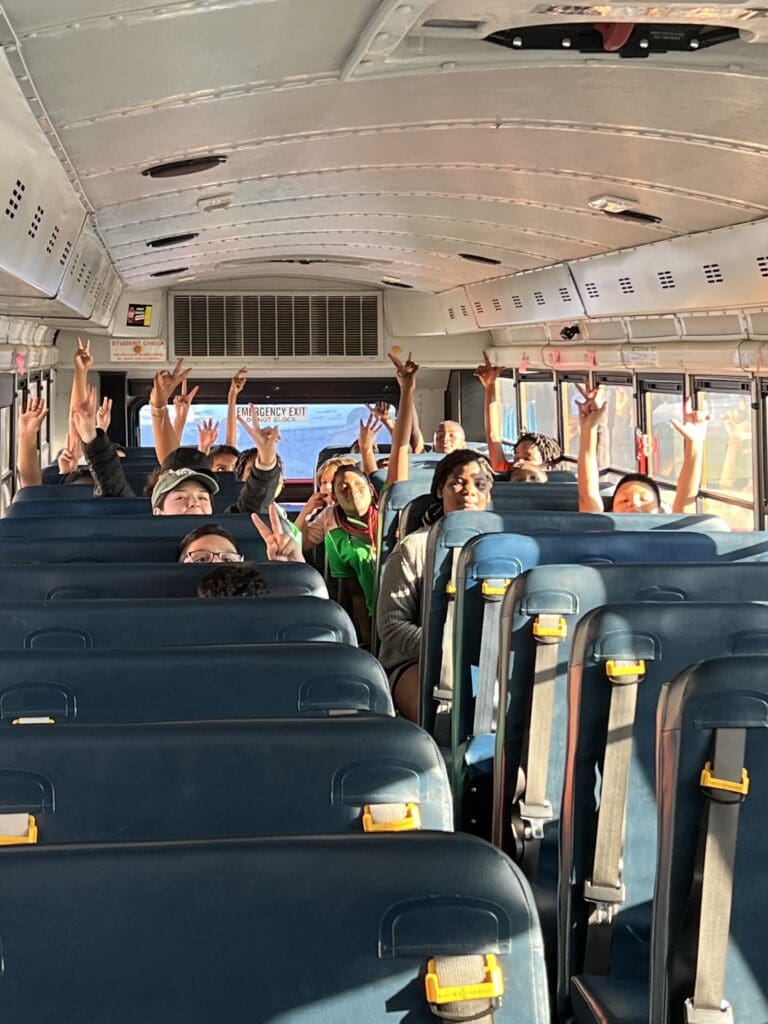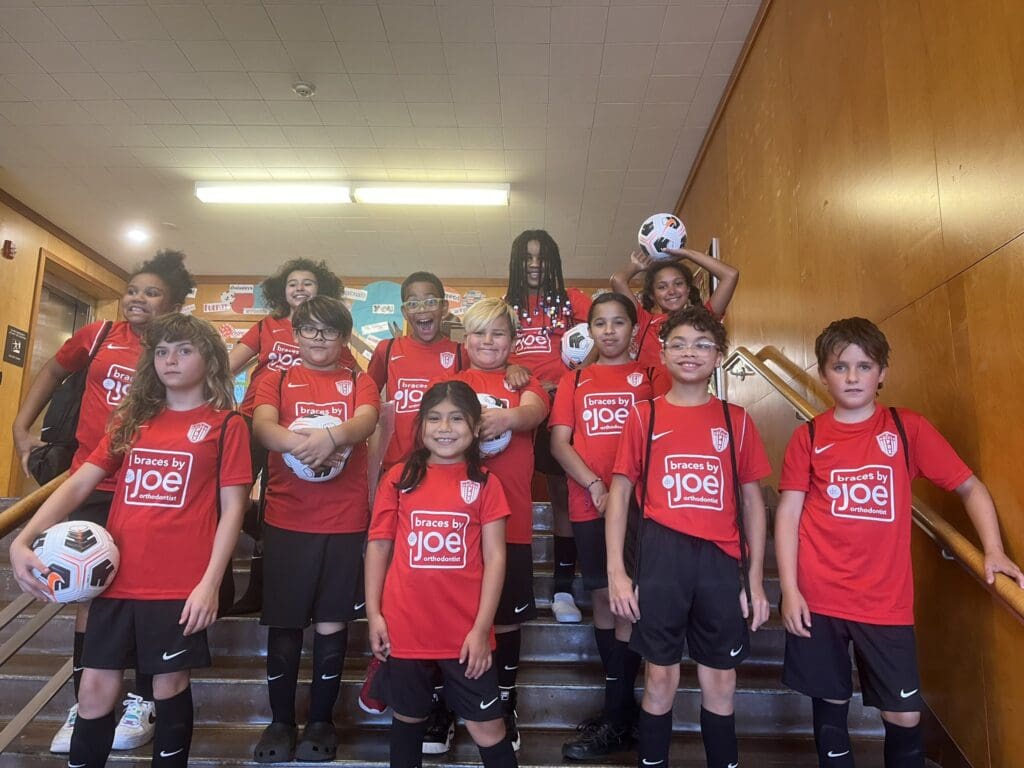Get on the Bus: Empowering Communities through Sport
Featured Youth Sports Clubs
Ellicott City (MD), Ballistic United Soccer Club (CA), Sky Soccer Club United PDX Soccer Club (OR), and Hillsborough Rush (OR).
Get On The Bus
In 2018, Tim Ryerson launched the Get On the Bus, (GOTB), aimed at supporting 4th and 5th grade students in underserved communities. This innovative program offers a comprehensive package including soccer coaching, life skills sessions, homework help, healthy snacks, and transportation to and from the soccer field. With a vision to reach 10,000 youth participants by the FIFA World Cup in 2026, GOTB has garnered participation from prominent clubs across the USA.
Why Get on the Bus is a Best Practice Example
Institute for Youth Sports Leaders (IYSL) recognizes Ellicott City, Ballistic United, Sky Soccer Club, United PDX, and Hillsborough Rush for best practice. GOTB supports the desire of club executives to give back to society while benefiting their organizations. By aligning with the philanthropic goals outlined in club missions, GOTB attracts goodwill, sponsorship interest, and revenue from player registrations. Moreover, it provides access to a diverse player pool, fosters community engagement, and offers valuable life lessons in volunteering.


Ensuring Accessibility and Inclusivity
GOTB prioritizes accessibility and inclusivity by targeting participants from Title I schools and allocating $500 per participant for uniforms and equipment. Recognizing transportation as a significant barrier for underserved communities, the program collaborates with schools to arrange bus transportation for students to training and game locations. Additionally, employing teachers and coaches to supervise the program further enhances inclusivity.
Program Funding
Initially self-funded by Ellicott City Soccer Club members, GOTB has received substantial support from local businesses, sponsors, and grants such as the United States Soccer Federation’s Innovate to Grow grant. Tim Ryerson’s proactive approach has help to secure grant funding from USSF for eight state associations (Nevada, Nevada, California North, California South, Connecticut, Oregon, Tennessee, Kentucky, Virginia, and Washington) while ongoing efforts aim to tap into school funding opportunities available to Title 1 institutions. Additional funding sources include individual donations, club fundraising, program sponsors and local, regional and national corporate giving.
Measuring Impact
While the positive impact of GOTB on participants is evident, the program is actively developing comprehensive metrics to measure its influence on academic performance, physical health, and socio-emotional development. Collaborating with schools, GOTB aims to track indicators such as attendance, grades, and behavior, providing valuable insights into the programs effectiveness. Early success stories of high school graduates volunteering as coaches highlight the lasting impact of the initiative.
Program Summary
Despite initial challenges in gaining recognition and support, Tim Ryerson’s perseverance has propelled GOTB into a national initiative with widespread interest and participation. With a vision to expand across all states in the USA and beyond, GOTB welcomes collaboration from individuals and organizations committed to making a difference in the lives of young athletes from underserved communities. Through soccer, GOTB not only nurtures athletic talent but also empowers communities, embodying the spirit of inclusivity and social responsibility in youth sports.
To-Do List for Youth Sports Leaders
1. Develop Program Infrastructure
- Action: Establish the operational framework for implementing the GOTB initiative by setting up partnerships with local schools and arranging logistics for transportation, coaching, and life skills sessions.
- Benefit: This ensures that the program is well-organized, accessible, and effectively supports underserved students, which maximizes participation and impact.
- Example: Partner with a local school district to arrange bus transportation and identify teachers who can assist with homework help. Develop a schedule that aligns with school timings and soccer practice sessions.
2. Secure Funding and Sponsorships
- Action: Identify and apply for grants, sponsorships, and local fundraising opportunities to support the GOTB initiative, including securing funds for uniforms, equipment, and operational costs.
- Benefit: Provides financial resources necessary for the program’s sustainability and growth, enabling the provision of uniforms, equipment, and other essential components for participants.
- Example: Apply for grants from organizations like the United States Soccer Federation and reach out to local businesses and community sponsors for support. Organize fundraising events to engage the community.
3. Implement Metrics for Impact Assessment
- Action: Develop and implement metrics to measure the program’s impact on participants, including academic performance, physical health, and socio-emotional development.
- Benefit: Allows for the evaluation of the program’s effectiveness, guiding improvements and showcasing success stories to attract further support and participation.
- Example: Collaborate with participating schools to track students’ attendance, grades, and behavior. Use this data to refine the program and demonstrate its benefits to potential funders and partners.
Tim Ryerson
Creator of Get on the Bus (GOTB) & Associate Executive Director McClean Soccer Club (VA).
Link to Get On the Bus Website
Get Involved! It’s free and Open Source
Start by comparing your club’s performance to 60 best practices and access to IYSL Best Practice Analysis Tool and receive a detailed report.
Get recognized – contact David Newbery if you have an example of best practice and are willing to share your story of success with the youth sports community. [email protected]
Join IYSL LinkedIn Group and Newsletter
